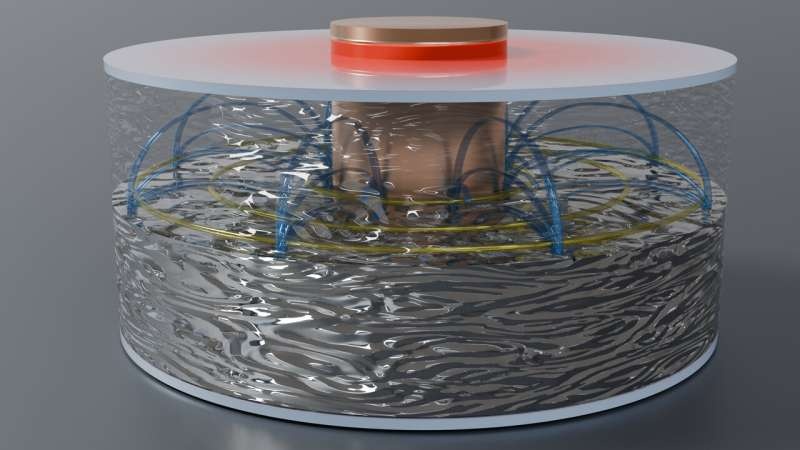Groundbreaking discovery of thermoelectric effect between two liquid materials could pave the way for innovative battery technologies.

Unexpected behavior of liquid metals
To their surprise, a team of physicists at Sorbonne Université in France has detected a thermoelectric effect between two liquid materials for the very first time. This upends the longstanding belief that such phenomena could only be observed at solid-liquid interfaces or solid-to-solid material interfaces.
Marlone Vernet, Stephan Fauve and Christophe Gissinger conducted the research and published their findings in Proceedings of the National Academy of Sciences. They tried out this idea using a new setup, dropping liquid mercury into a cylinder and floating another layer of liquid gallium on top. That setup enabled them to create a temperature difference between the two liquid metals, which is key to the thermoelectric response.
Deciphering the Liquid Metal Thermoelectric Mystery
What they discovered was tantalizing, even shocking. With a wire inserted into the interface between the two liquid metals and connected to an electricity measurement device they saw unambiguous evidence of a thermoelectric effect. Instead of a steady bolt, however, is was more akin to a slowly tumbling ribbon which fit from the both its energies; that and there were multiple additional loops of power snaking from the hot end to the cold.
More puzzlingly upon further inspection, in contrast to the thermoelectric effects reported for solid-solid or solid-liquid interfaces there were regions at this liquid-liquid interface which did not produce any electricity. Indeed, this special correlation reveals a more complex and evolving liquid nature in the thermoelectric phenomenon.
According to the researchers, this thermoelectric effect hasn’t been seen previously simply because no one had thought to look for it. It provides a new avenue for the study of thermoelectric processes, with potential application to the design of novel energy storage and conversion devices.
Conclusion
This discovery of the thermoelectric effect between two liquid materials, promises a major step forward in materials science and energy research. Understanding the unusual properties of liquid metal thermoelectricity, and manipulating or controlling this property will open up a new chapter in materials science to make advanced battery technology that can harvest energy from our surroundings or other exciting applications and thus change the way we think about power. This incredible discovery exemplifies the value of basic, curiosity-driven research and relentless questioning to uncover new information… and, well, sometimes the serendipity happens in a most grand fashion.
